Peter Ireland – 24 April, 2016
The exhibition's five participants - each contributing two images, except Veling who submitted a panorama - are an interesting mix of established photographers, Adams and Cook; one rapidly-emerging one in Tim J Veling; and two relative unknowns, current Ilam students, Bright and Waters. The first three have solid but extremely individual records as documentary photographers mining the landscape for that “social and cultural history.”
Christchurch
Mark Adams, Mitchell Bright, David Cook, Tim J Veling & Ellie Waters
On Site
1 April - 6 May 2016
Christchurch’s devastated CBD is gradually coming back to life. Hereford Street, traditionally the city’s financial and insurance hub, is the southern-most of four streets encompassing Cathedral Square, the four together making a rectangle on the map with fewer right-angles than the Square itself. In one of the new buildings springing up, this new photography gallery space - In Situ Photo Project - is just a few paces off Colombo Street, the spine of the city’s central grid system, so the location would warm the heart of any real estate agent. It’s also right next door to the relocated Scorpio Books, perhaps the city’s most comprehensive serious bookshop. Of course, it’ll be a while before the CBD returns to its pre-quakes pulse in terms of activity, but it’s enterprises such as ISPP and Scorpio that will attract people back into the formerly lifeless Red Zone.
ISPP is the brain-child of recent Ilam graduate Hannah Watkinson whose commitment to the photographic medium extends to getting more of it seen in the flesh. At a time when most imagery is viewed at uniform scale on the internet it’s encouraging to find new opportunities to see fresh photographic imagery in the dimensions decided by the individual photographers. The difference between, say, Peryer’s Rabbit (2000) and Gursky’s Ocean III (2010) does mean something (and in that case informs about each artist’s approach significantly). As well, a skilled curator can engineer illuminating cross-references between works in a physical space that trawling through the net can so easily miss, and in the case of a group show such cross-referencing can be vital to the exhibition’s concept being translated into visual success.
Watkinson is also an unapologetic believer in the long-running Place in Time project, founded by lecturer Glenn Busch in 2000 and based at Canterbury University where he lectures in the medium. Its brief is to record the city of Christchurch and its people through photography, oral history and documentary writing, and in the sixteen years of its existence has amassed a large archive and produced several publications. Deeply unfashionable in terms of the art world, it inadvertently gained major significance with the Canterbury earthquakes of 2010 and 2011, which in turn have provided it with a number of ongoing projects raising its profile and ensuring even more its continuing relevance.
ISPP’s On Site exhibition’s concept is a fairly general one: “the artists … have all made work in response to the social and cultural history embedded within the land … they inhabit” and rather self-consciously refers to “the photographers’ position as tangata tiriti”. In which case a firmer conceptual base might have made more of the nationally potent distinction between land and landscape, but perhaps by now that’s implicit anyway, especially in the case of photography which, naturally, has a head-start when it comes to the artistic expression of such difference.
The exhibition’s five participants - each contributing two images, except Veling who submitted a panorama - are an interesting mix of established photographers, Adams and Cook; one rapidly-emerging one in Tim J Veling; and two relative unknowns, current Ilam students, Bright and Waters. The first three have solid but extremely individual records as documentary photographers mining the landscape for that “social and cultural history.”
Indeed, Mark Adams’ work generally since the later 1970s might qualify him as New Zealand’s pre-eminent practitioner in this respect. His highly post-Picturesque approach to the notion of landscape in fact stands on its head the curator’s notion of “embedding” which presupposes a natural site which has all sorts of consequential associations: for Adams it’s the other way round. In his Cook’s Sites project, for instance, he can pair “landscapes” with “interiors” in such a way that the assumed opposites of “outside” and “inside” simply dissolve into one.
His Rotorua Region project of 1978-1986 - culminating in his Pakeha - Maori: a conjuncture exhibition at the then Rotorua Art Gallery in 1986 - first revealed his sharp eye for significant cultural nuance, even (or, perhaps, particularly) in sites that most would pass by unheedingly. But as John Te Manihera Chadwick wrote in the accompanying catalogue: “But when the same object or scene is isolated in a photograph it is quite incredible how its own private secret unfolds and how its subtlties slowly come into focus.”
Over the thirty years since then, Adams’ eye has become sharper and his instincts deeper and more assured as the nuances have become more complex and inter-connected, illustrated in projects as seemingly diverse as Cook’s Sites, his global investigation of the carvings of Tene Waitere, and, more recently, his series of mostly panoramic images of remote South Island sites where copies of the Treaty were signed in the very early 1840s (1). His last exhibition at McNamara Gallery Photography in September 2015 (2), Clevedon Garden - George Brown/Hori Paraone, newly-printed work from 1978, depicted now demolished structures made and carved by Brown/Paraone in a manner most observers would call “folk art”. The nature and current status of such material/taonga requires an essay in itself, if not book, so cannot be addressed further here, apart from pointing out Adams’ instinct for honing in on overlooked sites of such potency and significance.
Adams’ two images, from his ongoing Land of Memories series, seem to have little in common: a detail from the Ngai Tahu monument at Kaiapoi and the quake-shattered remains of Christchurch’s Shag Rock - known to Maori as Rapanui - a landmark sentinel at the mouth of the large eastern estuary into which both the Avon and Heathcote Rivers flow. Again, on reflection, there’s a deeper pairing of a cultural and natural monument, now drawn closer together by two disasters: the Kaiapoi one commemorating the destruction by Te Rauparaha in 1832 of the iwi’s principal pah Kaiapohia, and in 2011 the Christchurch earthquake.
Adams’ contribution of just two, apparently unconnected images points to an issue around the structure of this group exhibition and poses the question “Who is this show for?” Because, generally, it seems to assume in the viewer a fairly advanced knowledge of contemporary photography, which on the evidence would seem a big ask in the Christchurch of 2016. If ISPP’s mission has an educative component future exhibitions might need to be better tailored to meet this need.
David Cook’s contribution relates to his 25-year Lake of Coal project in the Waikato, the first image coming from the later 1980s when the small mining township of Rotowaru was destroyed to make way for an open-cast mine. Cook closely documented this process of corporate displacement and his first image is a compilation of 16 black and white photographs from this time, ranging from recording protest meetings to the destruction of individual homes. One of these, almost completely gone, still retains a sign on the street-facing wall “Lock front door as you leave.” (3) His other image is a recent night-time colour view of the flood-lit top of a chimney of the Huntly power station seen in the distance from down a country road (4), a station fuelled by the coal Rotowaru was destroyed for, and yet, two decades later, the station itself is being moth-balled.
Photography has always had an intimate relationship with time, and the Latin phrase sic transit gloria mundi - roughly, worldly things are fleeting - applies directly to Cook’s work, and now to Veling’s. At first sight his panorama from his ongoing Vestiges series, is an unremarkable “landscape” view of heaps of dead botanical rubbish piled up in front of unremarkable groups of very ordinary trees.
So what? Well, this was once Avonside, a prosperous Christchurch city suburb beside the winding Avon River and where character houses occupied lush and well-tended gardens, where thousands of people lived, loved and died, before the quakes changed the geographic and social landscape forever - nature doing for the city what culture did for Rotowaru. Veling’s committed documentary style eschews the post-Picturesque seductions of much contemporary “art photography” and so his imagery risks looking “too ordinary”, a judgement failing to perceive the conceptual intelligence and visual structure underpinning his practice.
Given the instability of the scenarios of interest to Cook and Veling, it’s perhaps optimistic for Mitchell Bright to pursue a project of situating people in their natural environments, ‘attempting to understand the reality of living somewhere geographically removed from a “big city.”’ His image of an eeler from his Within the Land series, tracks back through a long tradition beginning, perhaps, with August Sander working in Germany almost a century ago, a standard trope of photographic portraiture, established here in the 1970s by the likes of Glenn Busch (one of Bright’s teachers at Ilam) and Robin Morrison, among many others. His other image depicting the OceanaGold open-cast mine near Reefton (5) echoes, but in colour, Peter Peryer’s 2007 Macreas Flat. Bright’s is less abstract but there’s a similar scale game going on, contrasting the minuteness of the human machines with the vastness of the excavation.
Ellie Waters’ excavation is of another kind altogether. What she principally mines in her work is not time but memory - while tacitly acknowledging the close relationship between them. She maintains a relationship with the small, ancient settlement at Rapaki on Lyttelton Harbour, her work tracking the intersecting lines of historical and environmental impacts. Her first image, Rewi’s hut, intriguingly in terms of the subject matter, echoes the content of Adams’ Clevedon Garden work. Her other photograph, Urupa, depicts a disused and neglected 19th century cemetery. These images have the feel of Les Cleveland’s 1950s’ work on the South Island’s West Coast, a mixture of straight documentary and quasi-romantic melancholy.
On site is a rich and suggestive group show with a complex play of conceptual and historical under-currents, an exhibition to which the addition of four or five more specific images might have brought the meanings and connections closer to the surface. Nevertheless, the curator’s initiative in establishing the space and putting together this show should be heartily applauded and her continuing efforts supported wherever possible.
Peter Ireland
(1) Shown at McNamara Gallery Photography in Whanganui July 2012. A couple who review local exhibitions in a community newspaper there were clearly bemused as to the significance of these quite ordinary-looking landscapes and seemed able to critique them only in the spirit of the Rev Mr Gilpin, the 18th century author of the Picturesque.
(2) In fact the last exhibition at McNamara Gallery Photography’s physical site at 190 Wicksteed Street Whanganui. Since then exhibitions have been online.
(3) This sort of detail surfaces a number of times in Veling’s presently ongoing post-quake Avonside project - one of the signs on a domestic front fence reads “Thanks for the memories” - but none of these photographs is represented in this show.
(4) This image is reminiscent of much of Greta Anderson’s dramatically-lit night-time work.
(5) In a wonderful piece of corporate-speak, the company’s website announces that this year the mine will not close but “will transition into care and maintenance.”
Recent Comments
Chloe Geoghegan
Bravo Hannah Watkinson for starting this space, Chch needs more people like you. All the best.



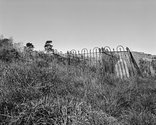
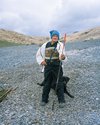
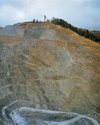



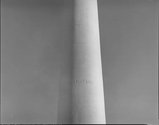
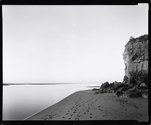
 Two Rooms presents a program of residencies and projects
Two Rooms presents a program of residencies and projects Advertising in this column
Advertising in this column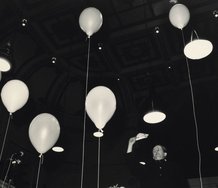

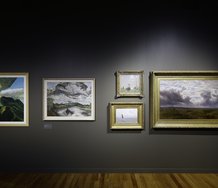

This Discussion has 1 comment.
Comment
Chloe Geoghegan, 10:40 a.m. 25 April, 2016 #
Bravo Hannah Watkinson for starting this space, Chch needs more people like you. All the best.
Participate
Register to Participate.
Sign in
Sign in to an existing account.